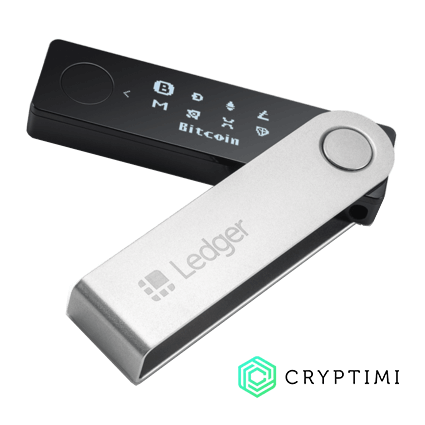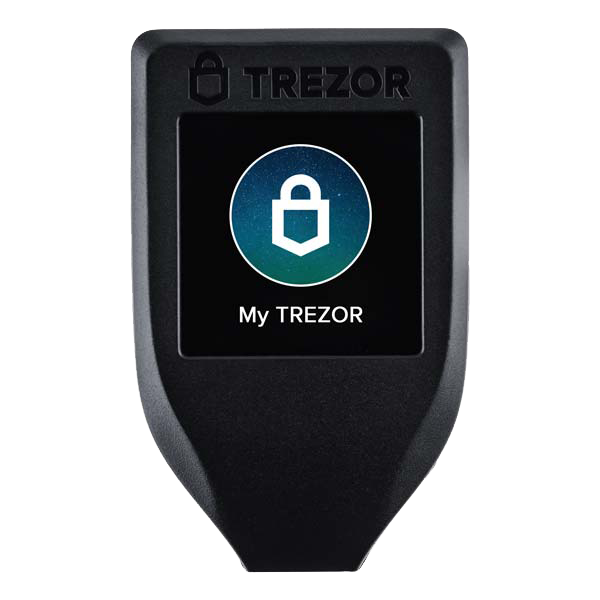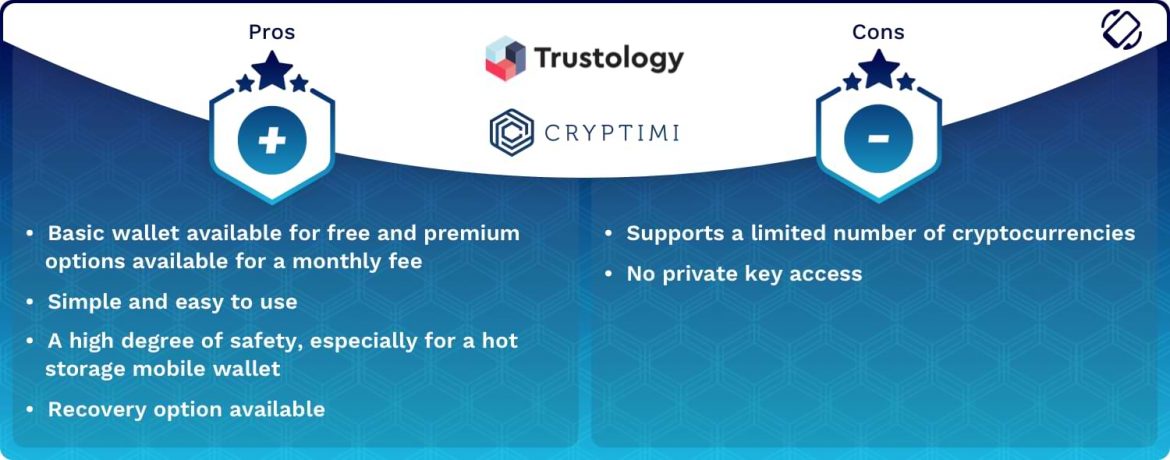- High (Show More) User Friendliness
- Easy To Use (Show More) Price
- Monthly Pricing on a Tiered Plan Structure
Jump to page contents
Trustology Wallet Review
Trustology is a powerful cryptocurrency wallet that caters to both institutional investors and private individuals. It was one of the first providers that offered their software wallet through a free or subscription model. Since its launch in 2017, Trustology has been busy introducing a wide range of services and solutions.
Just as you would expect from any other reputable crypto wallet, Trustology is able to protect your assets and allow you to transfer funds. Apart from offering custodial services, it also delivers secure methods of maximising DeFi returns and carrying out on-exchange transactions. This makes it an ideal wallet for corporate investors, venture capitalists, and asset managers. Its storage type consists of HSMs and secure data centres.
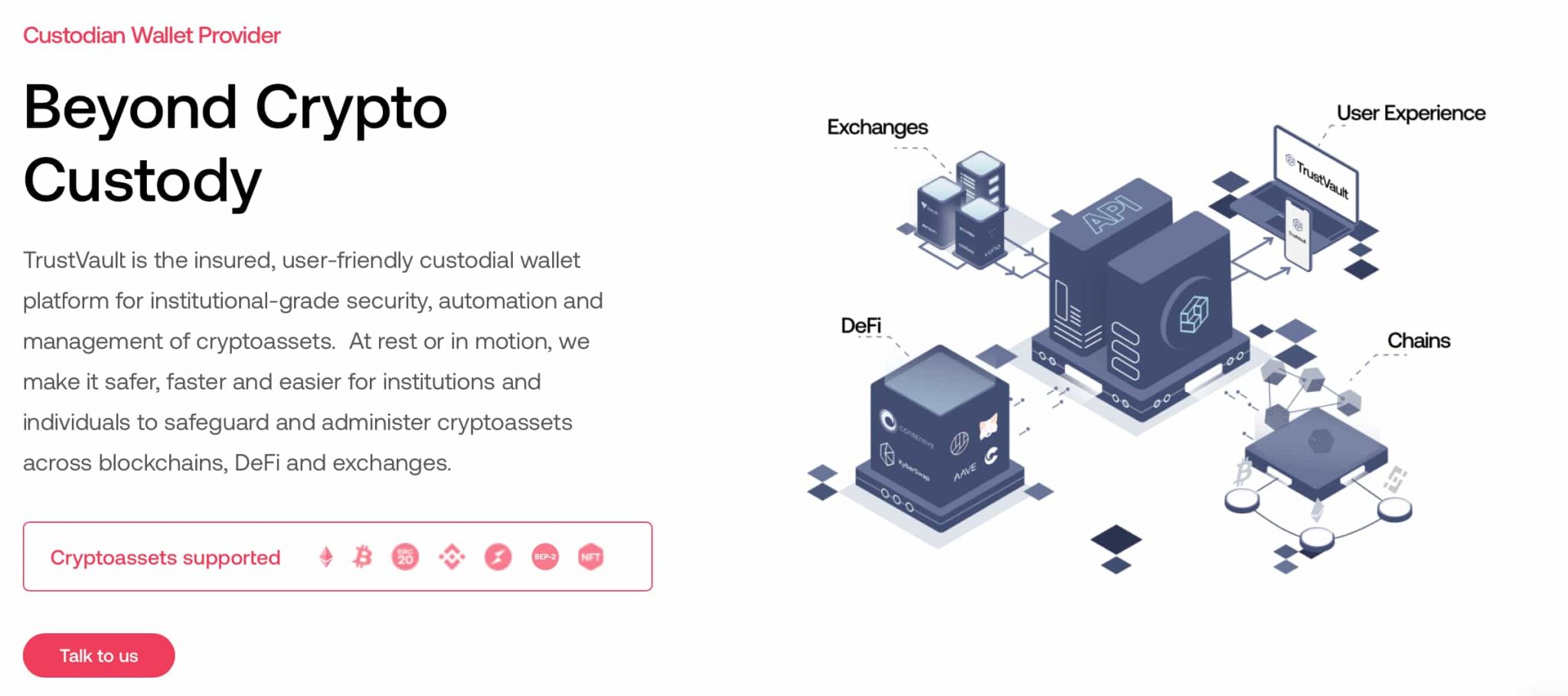
Trustology offers users a variety of innovative features, but none is probably as significant as their insurance. Funds in the TrustVault are insured against theft and loss or destruction of keys depending on any paid plan, all plans are insured. For businesses, they also offer extended insurance. The custodial wallet pricing mechanism is also different from most, with a subscription-based service. You can also opt for the free version, however, this does not include insurance.
How does Trustology compare to other top rated crypto wallets on the market?
- Trustology
- Ledger Nano X
Trustology has designed its services to cater to:
- Institutional investors – such as crypto hedge funds and asset managers.
- Service providers – including banks, exchanges, and brokers.
- Token issuers – particularly private placement token issuers.
- Individual investors – both new and experienced traders looking for custodial wallet services.
In many ways, the TrustVault can be considered to be both a hardware and software wallet. It is a unique custodial wallet offering a high degree of end-to-end hardware security and instant transactions through a user-friendly and functional interface accessible via web, mobile, or APIs. It also offers a user-friendly and functional interface. If you would like to learn about the ways that this wallet keeps your funds safe keep reading this review until the end.
However, if you’re not interested in the specifics, you should only know that through the subscription model, Trustology will continue to safeguard your funds indefinitely, without any need of input from your end.
Supported Cryptocurrencies
For the time being, Trustology only supports a limited number of cryptocurrencies and tokens. Whilst it can technically support any ERC token, its website indicates a total of 11, however it is stated that Trustology can support any token on Ethereum chain. These 11 are:
Bitcoin (BTC), Ethereum (ETH), DAI, Basic Attention Token (BAT), Maker (MKR), Holo (HOT), OMG, Chainlink (LINK), 0x (ZRX), Augur (REP), XDC Network (XDC), NFT and Vectorspace AI (VXV).
Supported cryptocurrencies on the TrustVault are expected to increase. You can stay up to date with the latest additions by visiting the Trustology Help Center.
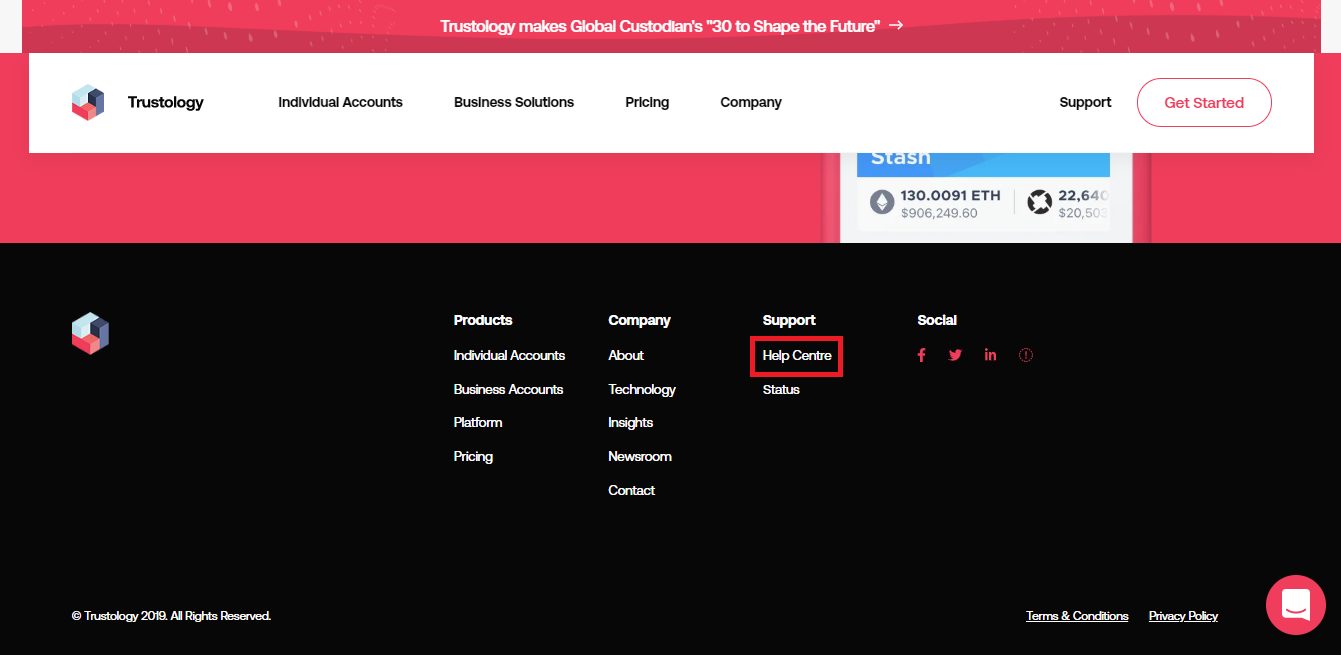
You can deposit and play with the cryptocurrencies supported by the Trustology wallet on our recommended crypto casinos:



Connectivity
You can connect to TrustVault via mobile, web UI or APIs. By installing the TrustVault app on your mobile phone you are automatically transforming it into your hardware wallet. This means that connectivity is never an issue, since your user instruction keys to sign transactions with is integrated into your mobile device, protected by the secure enclave and biometrics. The app works on all modern iOS operating systems.
With your Trustology wallet, you can now connect to MetaMask, a platform that facilitates access to Ethereum DAPPs. With this feature, you can conveniently access your favourite decentralised applications without the need to use insecure web browsers.
Originally designed for the individual user, Trustology has since transitioned to focus primarily on institutional investors. With that said, it continues to cater to private individuals.
The wallet provider offers two types of custodial services to its clients. These are:
- On-chain – Best-suited for DeFi investors.
- On-exchange – Ideal for serial traders.
Let’s have a look at how both of these services provide an enhanced range of benefits to asset managers and venture firms.
Trustology On-Chain Services
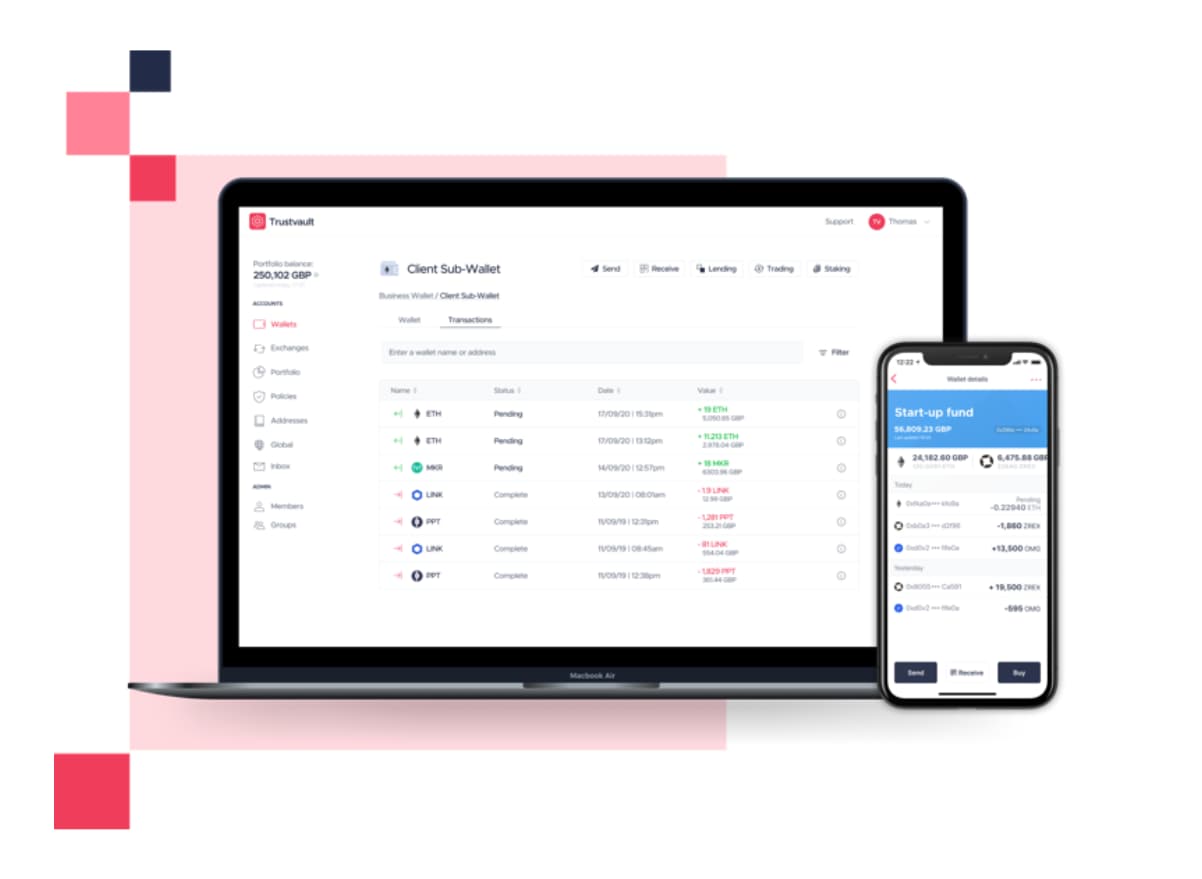 By using the TrustVault wallet platform, you will be able to safeguard your assets whilst also staking them and earning interest. This custodial wallet protects your private keys whilst, at the same time, makes your funds available to earn a return through DeFi services.
By using the TrustVault wallet platform, you will be able to safeguard your assets whilst also staking them and earning interest. This custodial wallet protects your private keys whilst, at the same time, makes your funds available to earn a return through DeFi services.
Some of the key benefits of the on-chain option include:
- Highly secure, yet quick.
- Support for Bitcoin, Ethereum, and Binance chains.
- DeFi integrations, including smart contract protocols.
- Built-in compliance measures provided by Sumsub and Chainalysis.
- Automate you investment to operate without any manual intervention
You can also connect your TrustVault with MetaMask to interact with DeFi Apps. In this way, you will be able to directly access lending platforms, decentralised exchanges, and other online platforms. To can connect your TrustVault to MetaMask using any supported Ethereum DApp.
Trustology On-Exchange Services
Through partnerships with several top-ranking cryptocurrency exchanges, Trustology is able to deliver quick asset transfer and conversions. The TrustVault is designed as the ideal management interface, providing both institutional investors and smaller traders with an overview of investments and flows.
Through the added KYC and compliance benefits of the on-exchange services, institutional investors will be able to foster a better relationship with regulators and their clients.
Additional benefits include:
- API integrations allow for both off-the-shelf and custom-made controls.
- Store your exchange wallet’s TOTP codes on the TrustVault for safer and quicker transactions.
Setup & Configuration
In order to start using Trustology, you must first create an account by downloading the iOS mobile app. At the time of writing, the Android version of the app was still in development, and it is currently only possible to open an individual account. Business accounts are also in development, and you should sign up for updates if you would like to use the TrustVault for your business.
Trustology has implemented simplified Know Your Customers (KYC) procedures, so you will need to identify yourself in order to open an account. You will also be guided to provide a government-issued ID and to take a video of yourself with the ID.
Using the wallet is fairly straightforward and in order to send cryptocurrencies all you need is the recipient’s public key. The TrustVault has a highly intuitive design, which makes it easy to use even if you’ve never used a custodial service before. Unlike the majority of other wallets, including those which are provided by exchanges, transfers by Trustology take mere seconds to be processed.
Security
TrustVault’s unique infrastructure utilises hardware security modules (HSMs) secure data centres combined with several layers of encryption. This combination helps to mitigate any security risks and provides you with a high level of security and reliability.
The reason why TrustVault is only currently available for iOS systems is due to the Touch ID ad Face ID features. Since the phone itself becomes your cryptocurrency wallet, Trustology needs to ensure that the funds are stored securely and that anyone who manages to steal your phone won’t have the opportunity to use your funds. As a result, when you download the application and register your account, confidential information is stored within the Secure Enclave of your iPhone.
When you send a transaction via Trustology, you are requested to prove your identity using the Touch or Face ID systems. This signs the transaction and confirms that your device has not been hacked. The combination of the information stored in the Secure Enclave and your biometric information creates a unique and theoretically impenetrable firewall.
Even with all these levels of security, the Trustology wallet allows you to execute transactions directly from your smartphone or API integration. This reduces any potential transactional delays normally caused by the manual processing of transactions, whilst also keeping a simplified user experience
The custodial wallet offers a segregated account structure where each account is secured by a unique user key. This eliminates the risks commonly linked to the omnibus account setups.
It’s good to keep in mind that when it comes to trading CFDs on a CFD trading platform, there is no need to make use of crypto wallets – and this makes safeguarding your profits easier. CFD trading platforms also offer compensation schemes. Check out our recommended CFD trading platforms here:



Recovery Options
If you get locked out of your account, the customer care team at TrustVault can assist you. So as to ensure that only the real owner of the wallet is allowed to reset a password, this process is not automatic. In order to unlock your account you need to:
- Contact customer care via chat or directly through the mobile application
- Follow their instructions to unlock your account
Before you get in touch with the support team make sure you know your PIN code as this will be required. Prior to giving you access to your account, the service agent will need to ascertain your identity via an ID check.
Since your iPhone is, essentially, your cryptocurrency wallet, should you lose it there are measures you can take to ensure that no funds can be moved.
As soon as you realise that your phone is missing, visit Trustology and open the live chat button. At the bottom of the chat window, you will find a “Lost Your Device” box where you can enter your registered email address. Next, you should:
- Install the TrustVault app on your new phone
- Contact customer support via the phone and initiate recovery procedures
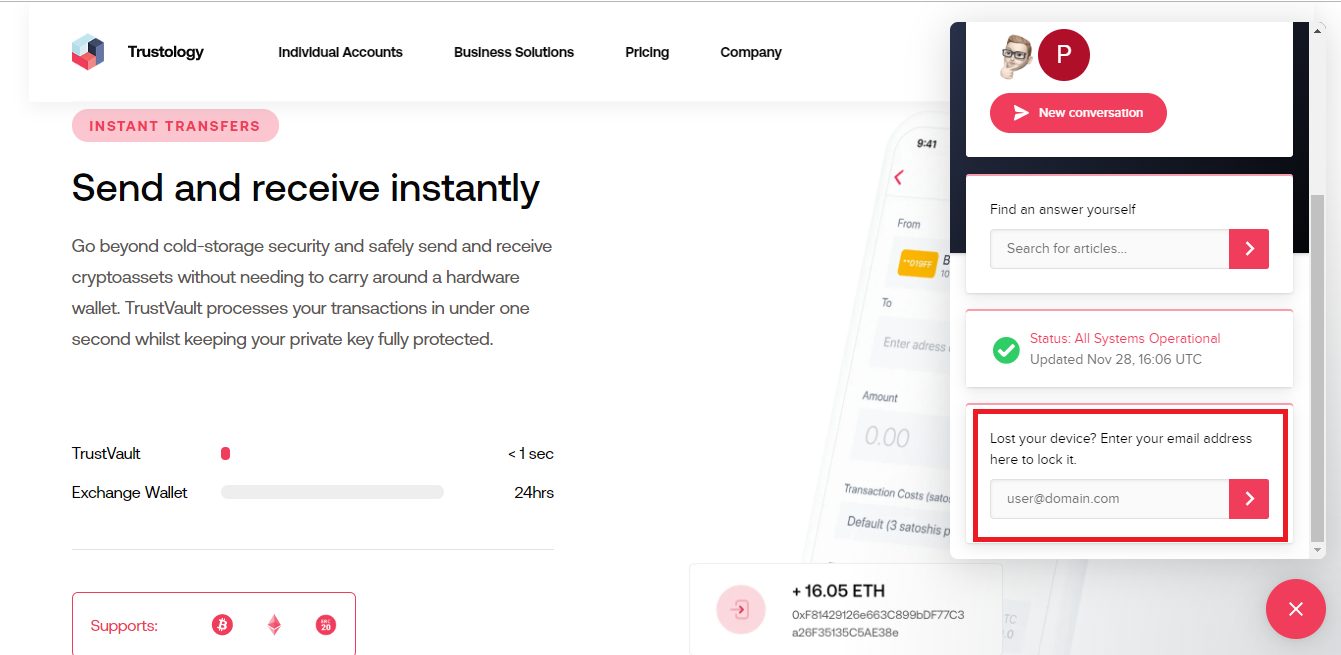
In order to successfully update your new phone with your funds, you will need to provide the same identity proof as you had used to create your account in the first place. There is also the possibility that you will be required to carry out a video call with a member of the customer service team.
Comments From Crypto Investors
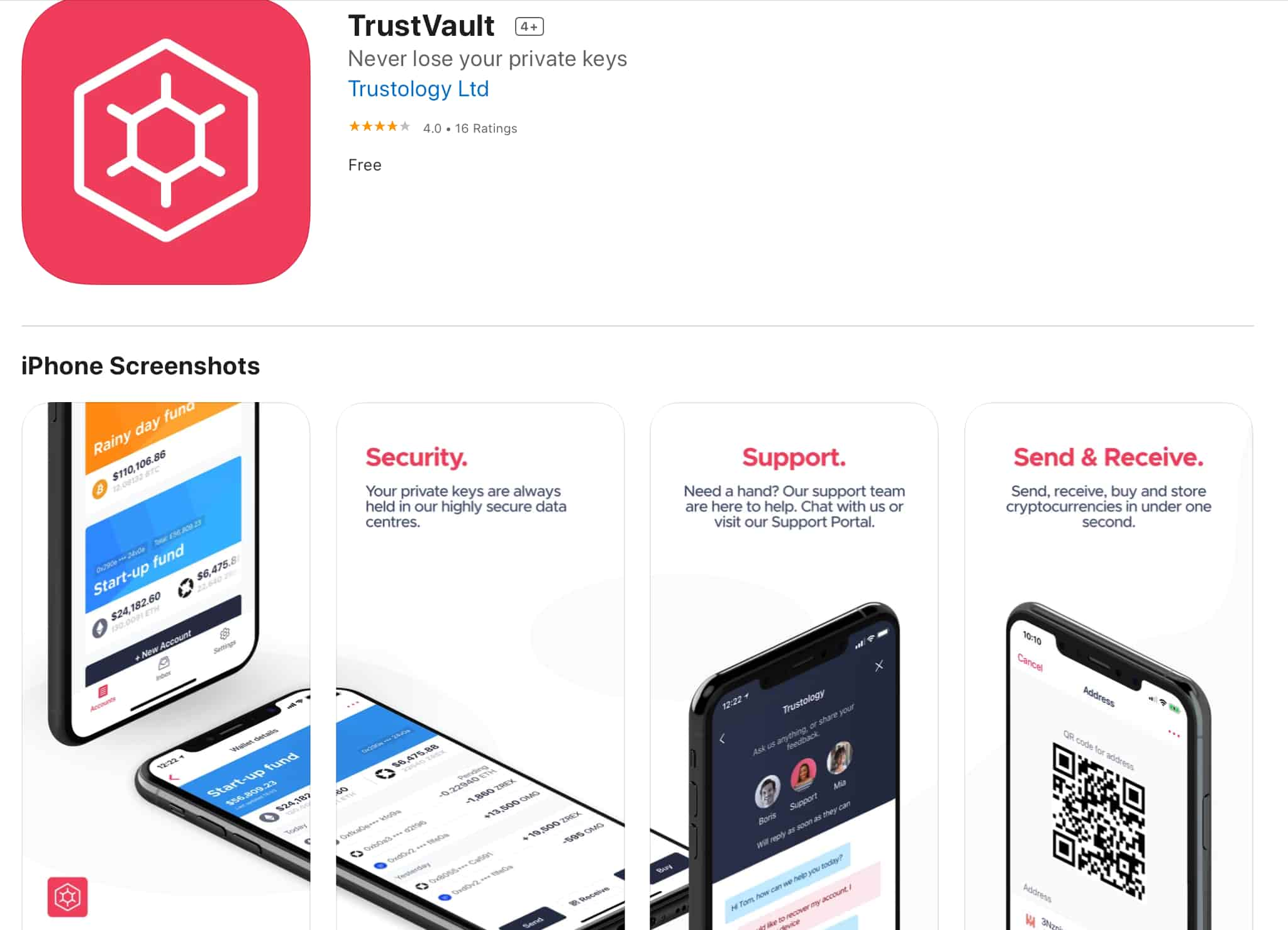
Since its launch of the TrustVault, Trustology has enjoyed a generally positive reputation. It has been difficult to find substantial reviews, but this is commonly a sign that everything works as it’s supposed to.
The TrustVault app has a four-star rating, although it has just 16 reviews. It is likely that since Trustology is now geared especially towards brokers, token issuers, and institutional investors, the number of individual users is not as large as with other wallets.
Trustology vs Ledger Nano X Wallet
The Ledger Nano X is a hardware wallet which is portable and extremely safe. The following is a comparison between the TrustVault and the Nano X:
- Storage – TrustVault can only hold a handful of assets in comparison to the Nano X’s ability to hold 100s at a time. Both wallets support any amount worth of cryptocurrency
- Performance – as a traditional hardware wallet, Ledger Nano X’s speed is limited when compared to the virtually instant speeds offered by Trustology wallet.
- Battery – the Ledger Nano X functions with a 100mAh battery which allows it to remain on standby for a couple of months. The TrustVault derives its energy from your mobile phone battery, which means that it can function as long as you’ve got charge.
- Security – both wallets offer superb security, however, TrustVault goes a step further, by insuring funds registered under premium subscriptions.
- Connectivity – TrustVault connects to the internet directly via your mobile phone, using either Wi-Fi or 4G. The Ledger Nano X can connect to smartphones or computers via a USB cable or Bluetooth.
- Size – weighing in at 34g, the Ledger Nano X is light and portable, but still remains a standalone device which you need to remember to carry with you. TrustVault is on your phone, so as long as you’ve got that with you, your cryptocurrency is always accessible.
- Cost – you can buy the Ledger Nano X at €119 from the manufacturer’s website. TrustVault works with a subscription model ranging from £2 to £4 per month. You can cancel this subscription anytime, automatically defaulting to the free version.
- Cryptocurrency Support – The Ledger Nano X is the clear winner here, supporting 1,100 different cryptocurrencies, whilst TrustVault can only support 11+.
Trustology vs Trezor Wallet
Trezor is another brand of highly popular hardware wallets which have a reputation for being extremely secure. The following list will compare the features and characteristics of the Trustology and Trezor wallets:
- Storage – Although it features a smaller storage capacity than the Nano X, Trezor’s 700 different assets storage capability is higher than TrustVault’s 11+, however, both wallets have an unlimited amount of how much value can be stored.
- Performance – Trezor wallets suffer from the slower speeds of practically all hardware wallets, whilst TrustVault transactions are instantaneous.
- Battery – Trezor does not require a battery, drawing its power from a USB cable when it is connected to a computer. The Trustology wallet gets its power from the mobile device it is installed on.
- Security – Celebrated for their safety record, Trezor wallets cannot be hacked remotely. The TrustVault features a similar ability, whilst also offering insurance to premium subscriptions.
- Connectivity – Trezor wallets connect via USB to a computer, limiting their use, especially when you are outdoors. The Trustology wallet connects via your mobile’s Wi-Fi or 4G connection, allowing you to access and manage your funds wherever you are.
- Size – The TrustVault is virtually weightless since it is part of your phone. Trezor wallets are portable and lightweight, but still, represent an additional device which you need to carry around with you.
- Cost – By visiting the Trezor online shop you will be able to purchase the Trezor One for €59 or the Model T for €180. Trustology operates a subscription-based business model, which costs either £2 or £4 per month, depending on how much funds you wish to store.
- Cryptocurrency Support – Like the Nano X, Trezor can support upwards of 1,000 different cryptocurrencies and tokens, whilst Trustology can support 11 primary ones plus any ERC token.
Rating
4.5
Portability – 4.9
Security – 4.7
Ease of use – 4.9
Cryptocurrency Support – 3.0
Pros and Cons
Trustology staff check your balance twice daily and calculate a monthly average based upon your account figures.
No, Trustology users must always verify their accounts.
Although Trustology is a hot wallet is extremely safe, going as far as insuring user’s funds against theft.
Similar Wallets Reviews
Launched in 2015, KeepKey Wallet is one of the oldest and most secure hardware wallets. Today it is run by the ShapeShift Exchange and ranks as the third-best wallet brand in the world.
Guarda is a non-custodial, multicurrency wallet that can hold a variety of digital assets including ERC20 tokens. It also offers the ability to buy, sell & exchange crypto in a very easy to navigate design.












